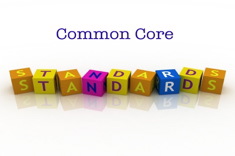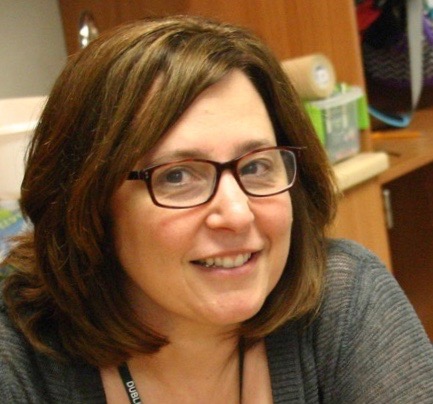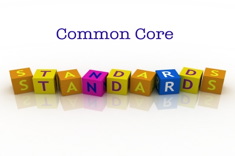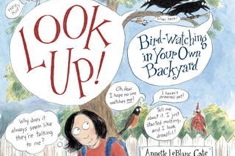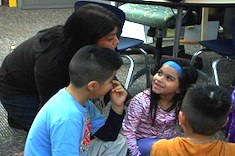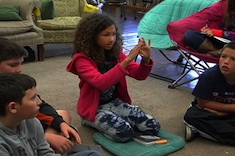As I try to choose books that will help my students meet the expectations of the Common Core State Standards, I find myself needing to look across grade level expectations to make sense of what children will be expected to do and understand.
There is a thread through the standards that deals with sequencing events in both history and science. In grade two (RI 2.3), the Common Core states that students should “Describe the connection between a series of historical events, scientific ideas or concepts, or steps in technical procedures in a text.”
Later, in grade four (RI 4.5) it is expected that students be able to “Describe the overall structure (e.g., chronology, comparison, cause/effect, problem/solution) of events, ideas, concepts, or information in a text or part of a text.” Although structure is the key to meeting this standard, one of the categories is the structure of chronology.
It appears that no matter which grade level I work with, chronology as it relates to making sense of science and history concepts is important. Stories help people understand science and history.
Animal Stories
There are several recent books that have been written about unlikely animal pairs and animals who have made a difference to someone. These stories are often told in longer picture book form, and are immediately engaging to students. Although they don’t always connect directly to content standards, this type of book would be a great introduction to chronology and working with students to describe a sequence of events.
Winter's Tail: How One Little Dolphin Learned to Swim Again by Craig Hatkoff, Juliana Hatkoff, and Isabella Hatkoff is the story of Winter, a dolphin who was rescued from a trap with an injured tail. Experts worked to create a prosthetic tale for Winter and to teach her to swim again. This is a terrific story that appeals to readers of all ages. Because it is told in a narrative, chronology of events is key to the story. Another by this same author team is Owen & Mzee: The True Story of a Remarkable Friendship
by Isabella Hatkoff, Craig Hatkoff and Paula Kahumbu. This story tells of an unlikely friendship that developed between two animals. Both of these books are longer picture books that probably require more than one sitting to read.
Nubs: The True Story of a Mutt, a Marine & a Miracle by Brian Dennis, Mary Nethery, and Kirby Larson is about a dog, a marine, and the bond they share. Nubs was a dog in Iraq who became the marine’s pet — even though pets were not allowed. The dog followed his friend through lots of hard times and places. This is a wonderful true dog story.
There are a few animal books that tie nicely into science curriculum. These animal stories focus on an animal’s journey or life cycle. One Tiny Turtle by Nicola Davies and The Emperor's Egg
by Martin Jenkins both chronicle events in an animal’s life and the ways in which these events work to protect the species.
How-To/How Things Are Made
Chronology is crucial for understanding how things are made. By using how-to type books along with narrative nonfiction, children see that chronology is important in various ways. I often begin with how-to books that children are familiar with, such as craft books or cookbooks. These help students see the way that chronology is set up in a non-narrative text. Finding books that tie into content is a bit of a challenge.
How Did That Get In My Lunchbox?: The Story of Food by Chris Butterworth and Lucia Gaggiotti is the story of food and the many steps that it takes for different types of food to get to someone’s lunchbox. The process for each food item is explored from the very beginning — the steps needed to make the food and the origin of the ingredients.This book ties into social studies as the global and interdependent aspects of food is made clear in this picture book.
There are many plant books that focus on chronology, and science seems to be a good place to bring in books in which chronology is key to understanding. Seed, Soil, Sun by Cris Peterson is a picture book that highlights the steps a plant goes through as it grows. The Milk Makers
by Gail Gibbons details the steps involved when making milk.
More and more books are being written that help readers see the ways in which ordinary things are made. Two books that have many pages of information about how things are made are See How It's Made by Penny Smith and Transformed: How Everyday Things Are Made
by Bill Slavin. Each of these books use stand-alone pages to share the processes for various items. The chronology for each is shown on a single page, which makes these helpful for minilesson work around the concepts.
Picture Book Biographies
When I think about these standards as they relate so social studies, picture book biographies seem to be a great place to start. There are so many good picture book biographies and these often bring times and people in history to life. Picture book biographies also help students see that history is the story of people and that individual people make a difference. The narrative structure of biography makes these kinds of books perfect for working toward connecting important events in history. Balloons over Broadway by Melissa Sweet is the story of the man who invented the balloons that fly over the Macy’s Day Parade each Thanksgiving. The Day Roy Riegels Ran the Wrong Way
by Dan Gutman is a great sports story about the 1929 Rose Bowl and a mistake one player made. Here Come the Girl Scouts!: The Amazing All-True Story of Juliette 'Daisy' Gordon Low and Her Great Adventure
by Shana Corey chronicles the life of Juliet Gordon-Low and her creation of the Girl Scouts.
Chronology is important in so many nonfiction narratives that we read. The connection of events in history and science helps our students make sense of big concepts. Looking at chronology in a variety of ways and in various content areas will be key to helping students build understanding.

